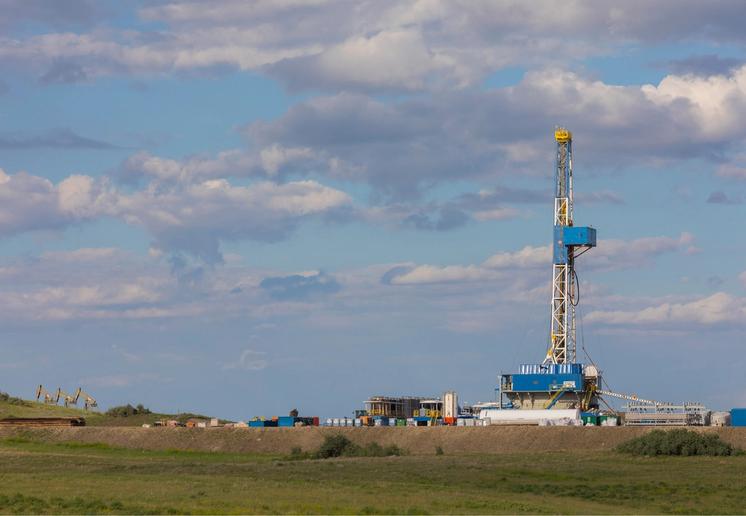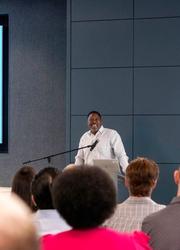
The Quest for Value: VP Mike Henderson Addresses URTEC
In many ways, the unconventional business is the tech equivalent of the energy industry. We’re driving a rate of change like nothing this industry has experienced before. I’ve been with Marathon Oil 15 years, and what an evolution it’s been – for Marathon as a company, and across the independent space.
The Pace of Change
Did you know that EIA didn’t even start reporting data on tight oil and shale gas until 2007? That’s the same year that the first iPhone was released. In many ways, the pace of change for unconventionals has moved farther and faster than the tech industry in the last 15 years.
Please note our forward-looking statements disclaimer.
For much of the run so far, many successful E&P companies have been solely focused on production. The speed of growth might ebb and flow – single digits, double digits – but the tried and true formula was to show the market intense production growth.
Now industry is seeing the repercussions of that old model. The quest for value and shareholder returns are required for today and the foreseeable future. And the companies that got ahead of this transition, that have been rewarding returns over production, are better able to survive the market volatility.
With that in mind, I’ll touch on three elements of our strategy at Marathon Oil, illustrating how we see the path to robust value in the unconventional space.
- The multi-basin model.
- Greater focus on returns.
- And, most recently, our common asset model that ties it all together.
All three of these are interrelated, but let me take them one at a time.

Mike Henderson — VP Resource Plays, North
The Multi-Basin Model
We believe our multi-basin portfolio is differentiated in a way that allows us to deliver against today’s investor expectations. Importantly, our four resource plays span the development cycle from early appraisal to full development pad drilling... different geologies, different fluid types and different operating challenges.
The Eagle Ford and Bakken are both more developed – we’re executing at the highest levels and extending the core as we go. Moving across the life-cycle spectrum, our position in Oklahoma STACK and SCOOP is what we consider to be early development. And in our fourth basin, the Permian’s Northern Delaware, we continue to appraise and delineate, but are learning fast and strategically pacing to integrate our learnings as we progress toward full-field development.
This multi-basin model provides exposure to different risk/reward combinations. Our ability to manage this diverse portfolio through capital allocation leads to the balance of growth, returns and future opportunities.
Greater Focus on Returns
This sets us up to make an early shift to the second element, a greater focus on returns.
And our results tell that story best:
- In the Bakken, we’ve outperformed with a string of record-setting wells, starting in the Myrmidon area, and have been able to repeat our success in Hector and Ajax. In the first quarter, our 180-day cumulative oil production rates were outperforming the peer average by 45%, and our completed well costs were down 25% compared to a year ago. That’s driving value.
- Our over-pressured STACK infills are outperforming the type curve by 50%, and completed well costs per lateral foot are down more than 30% compared to the parent wells. That’s improving returns.
- And you’ll hear our Eagle Ford VP Dale Kokoski talk later today about approaches like vertical integration, automation and field service management -- ways we’re driving consistency and capital efficiency, and enhancing free cash flow generation.
A large part of our success is due to collaboration across our multi-basin business: we’re learning quickly, and we’re sharing those lessons across the assets to capture efficiencies and drive performance.
That brings me to my third point: the common asset model we’re fostering at Marathon Oil.

Bakken Resource Play — North Dakota
Common Asset Model
We’re transitioning this year to a more standardized asset team model that fully leverages co-location. You might have heard that we’ve moved some select roles from our San Antonio and Oklahoma City offices to Houston. Our vision is to create an asset-centric environment that enhances the way we work together, allows us to share ideas, learnings, be even more innovative, and ultimately improve our productivity.
This approach is breaking down silos that can sometimes develop in companies. We refer to it as our “One Team” mind set: the integration of people, technology and innovation across the assets and the functions.
I think it gives us a competitive advantage for recruiting too. If you’re an engineer or geoscientist joining us, you can work on a variety of projects to gain experience across different basins, or bridge into different disciplines. Develop in your career without having to relocate five or six different times, like I did.
And from the company’s standpoint, we want to leverage your talent across projects to generate ideas and innovate in real time. The early lessons we learned in the Bakken and Eagle Ford have allowed us to better understand shale and deepen our expertise. That’s how we truly take advantage of our multi-basin model.

Operations Control Center — Houston, Texas
I saw a stat recently: In the four basins where we operate – Eagle Ford, Bakken, STACK/SCOOP and Northern Delaware, there have been more than 50,000 horizontal wells drilled in the last 15 years by industry. Nearly 10 unconventional wells every day, for 15 years, just in those four plays.
The sheer scale and scope of unconventionals demand serious collaboration and digital integration.
Our teams have already realized gains in operational efficiencies that we didn’t think were possible 5 years ago. The most recent challenge facing us is how to take greater advantage of a digital environment to allow us to make better decisions, and make those decisions faster.
Our teams are already focused on leveraging high volume data analytics and pairing that with high resolution advanced modelling to realize further gains in operational effectiveness. We are taking advantage of operational data streams to analyse, train and predict. It's remarkable to look back and see what we’ve achieved, but this is just the beginning.
The next chapter of the U.S. unconventional success story will be written by bold companies that harness the integration of the best people with the best technology to drive enterprise value, and boost profitability and improve sustainability.























